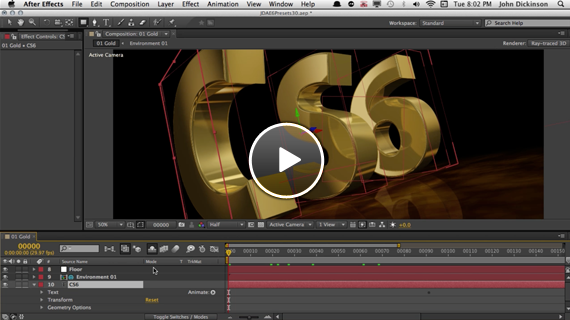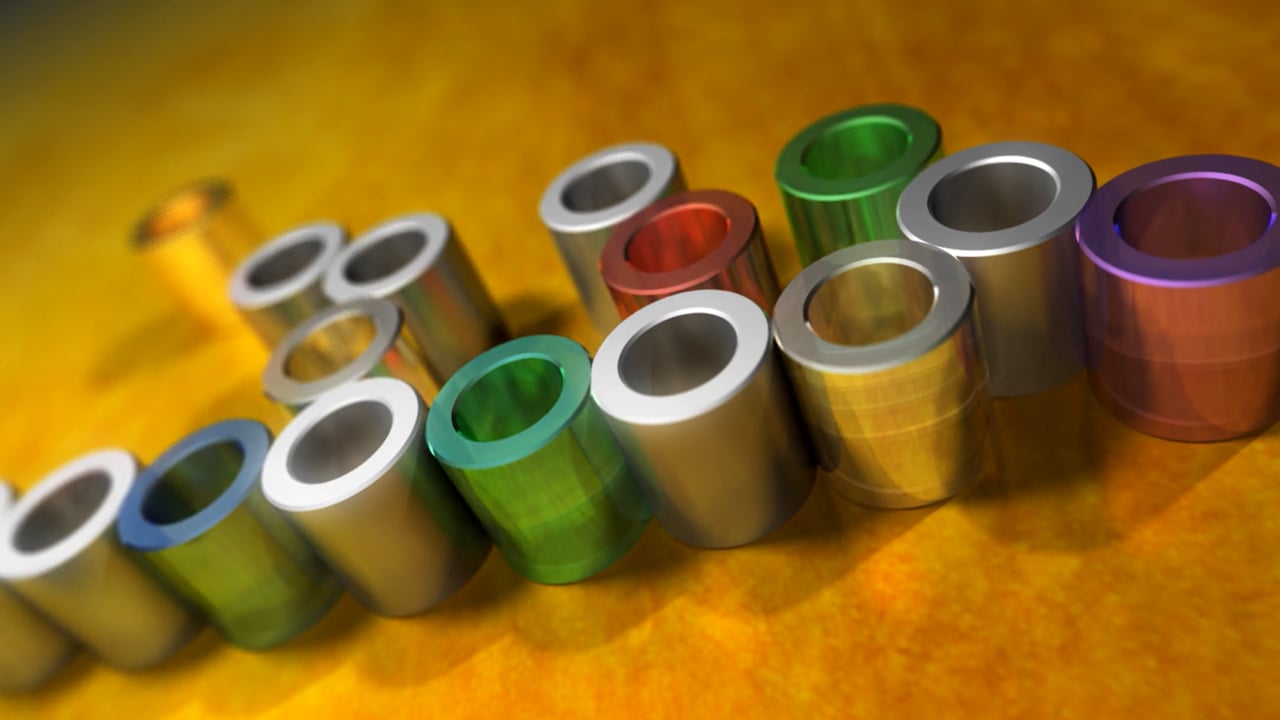
After Effects and Typography Animation — A Lovely Duo for a Demo Reel Intro!
Even when you use After Effects every day, know it inside out, and whisper bedtime stories to it before it sleeps, this compositing/animation...
On the occasion of NAB 2012, Adobe unveiled Production Premium CS6, included in the upcoming Creative Cloud. This is our chance to discover all the new features in After Effects CS6!
Finally! You’ll now be able to add depth with a single click to any text or shape layer! With a brand-new 3D ray-traced rendering engine (Ray Tracing), After Effects finally offers one of the most requested features: simple, native layer extrusion. And it does it well! You can now extrude your text while keeping all animation properties intact. New material properties have been added for 3D layer control: reflections, index of refraction, transparency, environments, bevels… The new possibilities offered by this rendering engine are huge, and I can’t wait to share tutorials that take advantage of these new tools! To get a concrete idea of what it looks like, check out this demo by Motionworks:

After Effects can now track your videos in 3D, without any plugins or third-party software, to automatically create a virtual 3D camera that matches the real camera from your footage. Select your video, click to solve the camera, and the analysis runs in the background. You can continue working on your project while After Effects determines the best match for the real camera motion.
Track points are selectable directly in the viewer, allowing you to create layers in the correct 3D position with a single click. A new “Shadow Catcher” option has also been added, enabling you to project shadows onto existing elements in your footage. You can now recreate the Fringe-style title integrations entirely within After Effects ;)
To see it in action, here’s a short video by Maltaannon on the new 3D tracking feature:
![]()
Another long-awaited improvement: you can now independently control the feather for each vertex of a mask. A feature that will make all compositing and VFX artists very happy. This makes it possible to reduce the number of masks needed when isolating objects that require both sharp and soft edges.
Finally, one of the most noticeable new features in daily use: speed! CS6 is shaping up to be the most powerful version of After Effects ever, thanks to a combination of new technologies designed to boost performance.
After Effects now saves all rendered frames in RAM, not only for compositions but also for individual layers! Practically, if you preview your comp, then disable a layer or an effect, the change recalculates quickly. When you re-enable it, After Effects retrieves the already cached frames from RAM, and the render is almost instantaneous. The result is a much smoother workflow, allowing you to experiment without having to re-render everything each time! Cached frames are reused in many cases — for instance, the Loop expression only recalculates the frames needed to loop. Duplicate a comp or a layer, and After Effects will reuse already rendered sources.
After Effects now stores all frames cached in RAM also on disk. This allows it to restore your pre-renders when reopening a project. Handy if you switch between projects throughout the day — no more re-rendering! After Effects will decide whether it’s faster to re-render a frame or load it from the disk cache back into RAM. You’ll want a fast, spacious hard drive to fully benefit from this new feature.
A major effort has also been made to improve OpenGL and GPU support — which will come in handy for the new 3D Ray-Tracing engine. Overall, layer display and manipulation in the viewer are smoother and more responsive. Depending on your configuration, After Effects CS6 can be up to 16x faster than the previous version!
Here’s an example created with the excellent Newton, a physics simulator for After Effects, showcasing the new 3D possibilities:

I am the Founder of Mattrunks. I work as Creative Director and Motion Designer in my studio. I also create video tutorials to share my passion of motion.
Newsletter
© 2007-2025 Mattrunks – Developed by Grafikart